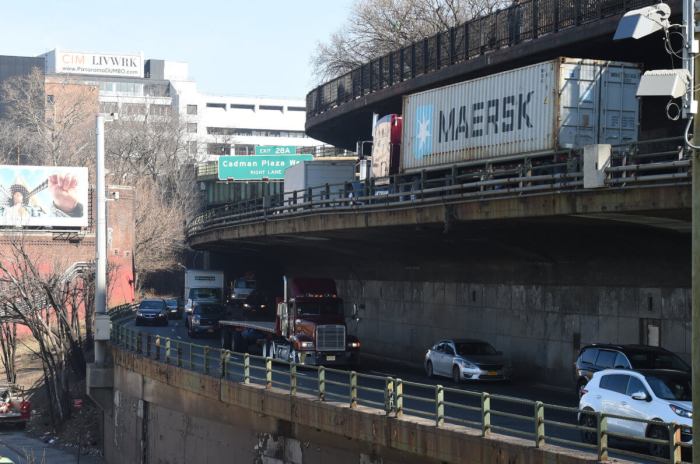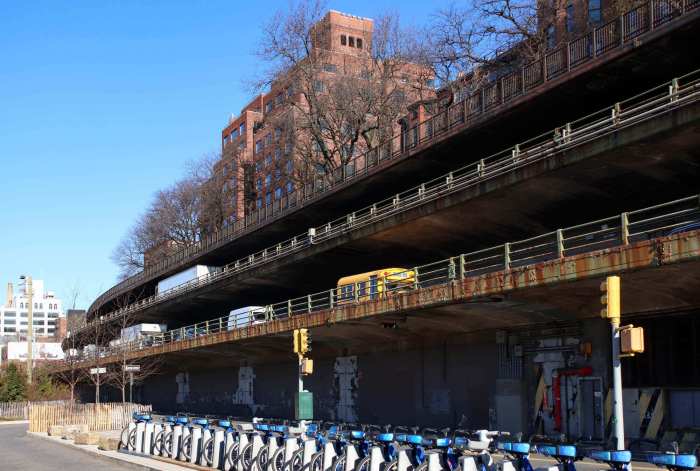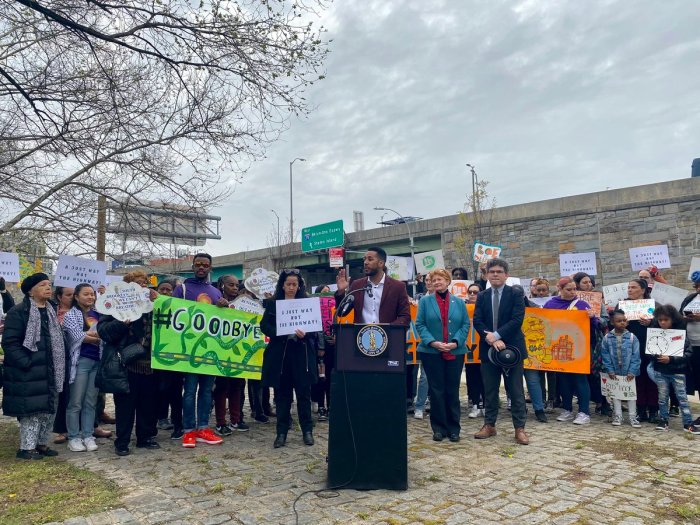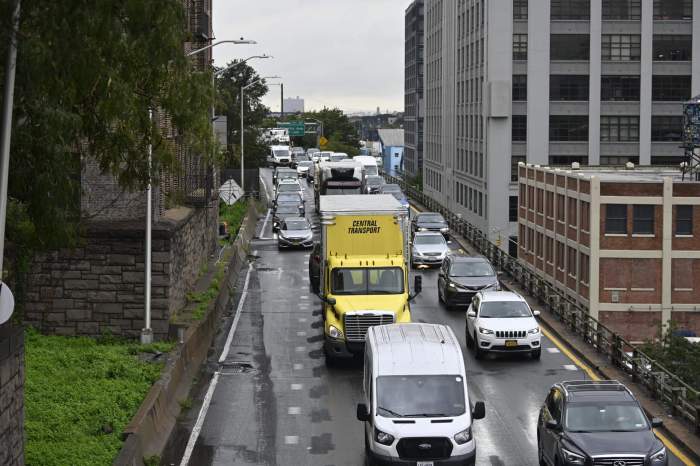Brooklyn Heights residents will breathe in toxic chemicals for years if the city moves forward with a plan to turn the neighborhood’s Promenade into a six-lane speedway for gas-guzzling cars and trucks during the looming reconstruction of the Brooklyn–Queens Expressway’s triple cantilever, experts warn.
“A 7-year-old would spend their entire childhood exposed to pollution,” said journalist and public-health expert Laurie Garrett, who in 1995 won a Pulitzer Prize for her reporting on an outbreak of the Ebola virus in Africa. “People have homes right there, we don’t have any scheme for how we would keep all the noise and pollution from going right into living rooms and bedrooms.”
The historic Promenade, which sits at the top of the 70-year-old highway’s crumbling three-tiered structure, currently acts as a barrier that blocks the toxic pollutant known as “fine particulate matter,” or pm 2.5, emitted by the 153,000 cars and trucks on the expressway daily from filling the lungs of kids, oldsters, and other vulnerable individuals living in the Heights, according to Garrett.
Bigwigs at the New York State Department of Health warn that pm 2.5 can irritate the eyes, noses, throats, and lungs of people who inhale it, and that prolonged exposure to the noxious particles can increase the risk of chronic bronchitis and death from lung cancer or heart disease.
And if city transportation officials move forward with their so-called “alternative approach” to turn the Promenade into a six-lane speedway for at least six years in order to shore up the 1.5-mile stretch of expressway — which Mayor DeBlasio prefers over the so-called “traditional approach” to rebuild the highway lane by lane, potentially causing traffic for up to 12 miles — then those chemicals would instead fly right into people’s homes, said Garrett, the author of a 2011 tome about the public-health crisis that plagued parts of the city following the 9-11 attacks.
“The alternative route will be literally inches from people’s bedroom windows, inches from playgrounds, and feet from schools and residents throughout, and we don’t have a precedent in the city for doing this to a community,” she said. “Eighteen-wheelers burning fuel, 153,000 vehicles a day rolling right at the level of people’s home windows — this community can be poisoned while we fix this.”
The mere possibility of such an increase in local pollution should be enough for Hizzoner — a self-professed fighter of climate change who still routinely hops into a sport-utility vehicle for the 12-mile drive from his Manhattan residence to his beloved Park Slope gym — to pump the brakes on his preferred repair plan and instead consider alternate solutions, according to Garrett.
“If we’re serious about climate change, and DeBlasio claims to be, why are we building a superhighway for 153,000 gas-guzzling vehicles everyday?” she said.
Officials — who said both the alternative and traditional approaches for fixing the triple cantilever would cost nearly $4 billion, with the former expected to end as soon as 2026, and latter lasting as long as into 2029 — should instead use that cash to conceive of an entirely new transit scheme for locals, rather than simply rebuild a decades-old roadway that the journalist called infrastructure of the past.
“With $4 billion we could build an amazing people-mover system,” Garrett said. “Why are we still looking at exactly the same technology that Robert Moses was looking at right after World War II?”
And one city pol — who is rumored to be eyeing a run to succeed DeBlasio in the 2021 mayoral election — doubled down on Garrett’s plea, demanding his colleagues explore every possible option for repairing the length of expressway between Atlantic Avenue and Sands Street in order to spare people’s lungs and the Promenade, which must close for a time regardless of the option chosen due to its position atop the highway.
“Have you looked at the long term environmental impact on the surrounding community from property damage, dust, and debris due to the innovative approach?” Comptroller Scott Stringer wrote in a Dec. 17 missive to Hizzoner. “How does maintaining a major highway running through residential neighborhoods help that?”
Leaders of the city’s Department of Transportation, who are overseeing the repairs that could kick off as soon as 2020, are still weighing all their choices, and are about to kick off the job’s environmental-review process, according to a spokeswoman, who said the bigwigs will hold several upcoming meetings with Brooklyn Heights locals and civic leaders worried about the possibility of their beloved walkway turning into a temporary highway.
“We are about to start the environmental-review process, which requires we offer a range of concepts. And contrary to one of [Stringer’s] letter’s major assertions, we have absolutely not ‘eliminated construction-method alternatives’ for BQE reconstruction from further consideration,” said Alana Morales.























